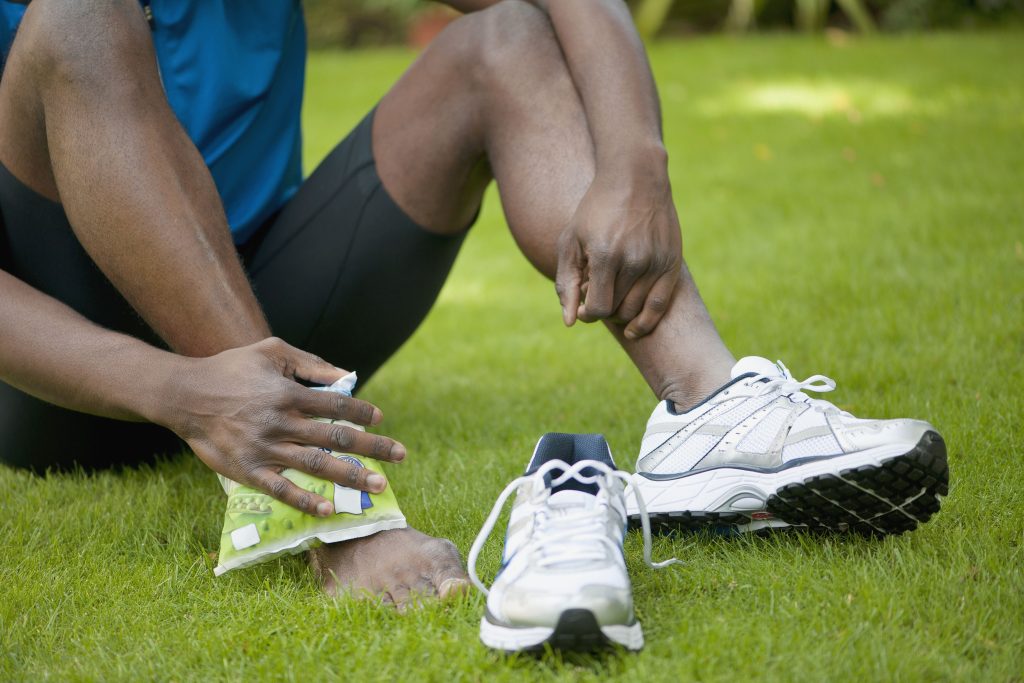Sports
Prevent Ankle Sprains: Essential Tips for Tahoe Outdoor Enthusiasts

Outdoor activities in the Tahoe region, such as hiking in Desolation Wilderness or skiing at Heavenly, can lead to a frequent injury: ankle sprains. These sprains occur when the ligaments supporting the ankle stretch or tear, often due to uneven terrain or sudden movements. Understanding how to prevent and recover from these injuries is vital for locals and visitors alike.
Understanding Ankle Sprains
Ankle sprains happen when the ankle rolls inward, typically when the heel is elevated and the toes hit an uneven surface. This injury is particularly common in areas like Tahoe, where outdoor enthusiasts navigate rugged landscapes and shifting weather conditions. The ligaments on the outside of the ankle, known as the lateral ligaments, are most frequently affected. However, more severe sprains can also involve the inner ligaments or the connections between the two lower leg bones, especially during high-impact activities.
Recognizing the importance of these ligaments is crucial. They not only stabilize the ankle but also facilitate movement and contribute to proprioception—the body’s ability to sense its position in space.
When to Seek Medical Attention
If an ankle sprain is suspected, it is important not to ignore the symptoms. A licensed healthcare provider or physical therapist can assess the injury and determine whether imaging is necessary to rule out a fracture. Immediate care can prevent complications such as chronic instability or early arthritis, which can significantly affect an active lifestyle.
Seek medical attention if you experience:
– Significant swelling or bruising
– Inability to bear weight after the injury
– Numbness, tingling, or a sensation of instability in the ankle
Initial Care and Rehabilitation
In the first 48 hours post-injury, employing the RICE method—Rest, Ice, Compression, and Elevation—can effectively manage pain and swelling. Depending on the severity of the sprain, a healthcare provider might recommend using a brace, splint, or walking boot to protect the ankle during recovery.
Early weight-bearing, if tolerated, is important for recovery. Crutches may be necessary to avoid limping while the ankle heals. Rehabilitation is essential for restoring mobility and strength. A physical therapist can guide you through exercises that enhance ankle stability and improve balance, critical for returning to outdoor activities safely.
Balance Training for Recovery
Once the ankle begins to feel stronger, it is beneficial to start balance retraining. This can mimic everyday movements encountered in the Tahoe terrain. One effective exercise is the single-leg balance with reach. Stand on the injured leg and reach the other foot forward, to the side, and behind you, lightly tapping the ground with each movement. Repeat this motion ten times in each direction, focusing on maintaining steady weight on the supporting leg.
It is important to stop if you experience sharp or increasing pain during the exercise.
Preventing Future Injuries
Living at elevation in Tahoe can lead to quicker muscle fatigue and an increased risk of injuries. To mitigate this risk, it is recommended to spend a few minutes warming up before engaging in activities. Simple exercises like calf raises, ankle circles, and single-leg balance drills can prepare your body for the challenges of hiking, biking, or skiing.
Kirstyn Lipp, a physical therapist at Barton Rehabilitation and Sports Medicine, emphasizes the importance of injury prevention in an active lifestyle. October is recognized as National Physical Therapy Month, highlighting the significant role physical therapists play in recovery and rehabilitation. For more information on rehabilitation services, including physical therapy, visit BartonHealth.org or call 530-539-6600.
-

 Science2 weeks ago
Science2 weeks agoIROS 2025 to Showcase Cutting-Edge Robotics Innovations in China
-

 Politics2 weeks ago
Politics2 weeks agoJudge Considers Dismissal of Chelsea Housing Case Citing AI Flaws
-

 World2 weeks ago
World2 weeks agoBravo Company Veterans Honored with Bronze Medals After 56 Years
-

 Lifestyle2 weeks ago
Lifestyle2 weeks agoStone Island’s Logo Worn by Extremists Sparks Brand Dilemma
-

 Top Stories2 weeks ago
Top Stories2 weeks agoIndonesia Suspends 27,000 Bank Accounts in Online Gambling Crackdown
-

 Health2 weeks ago
Health2 weeks agoStartup Liberate Bio Secures $31 Million for Next-Gen Therapies
-

 Sports2 weeks ago
Sports2 weeks agoMel Kiper Jr. Reveals Top 25 Prospects for 2026 NFL Draft
-

 Health2 weeks ago
Health2 weeks agoTop Hyaluronic Acid Serums for Radiant Skin in 2025
-

 World2 weeks ago
World2 weeks agoHoneywell Predicts Record Demand for Business Jets Over Next Decade
-

 Politics2 weeks ago
Politics2 weeks agoNew Jersey Voters Urged to Register Ahead of November Election
-

 Sports2 weeks ago
Sports2 weeks agoYamamoto’s Mastery Leads Dodgers to 5-1 Victory in NLCS Game 2
-

 Lifestyle2 weeks ago
Lifestyle2 weeks agoMary Morgan Jackson Crowned Little Miss National Peanut Festival 2025







